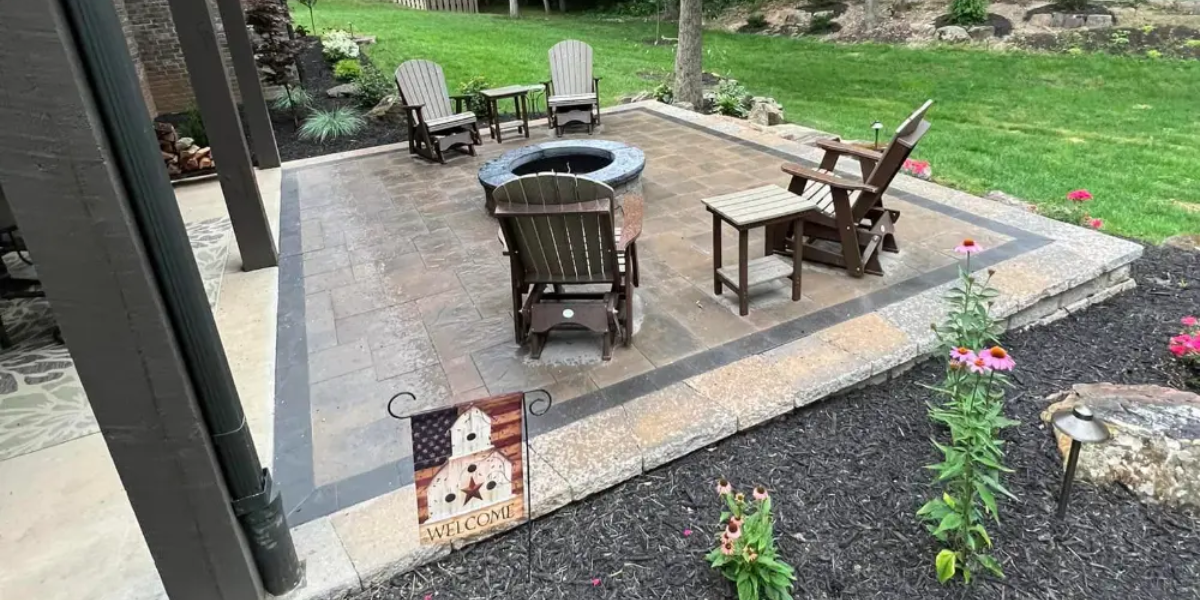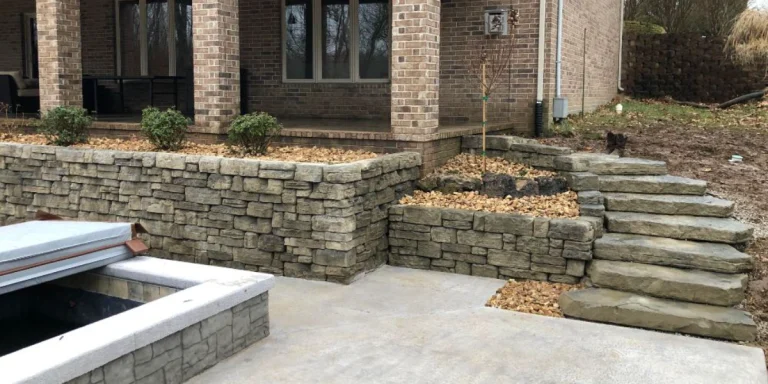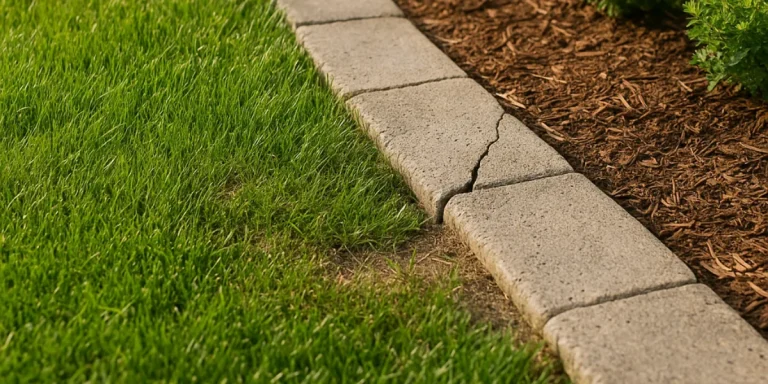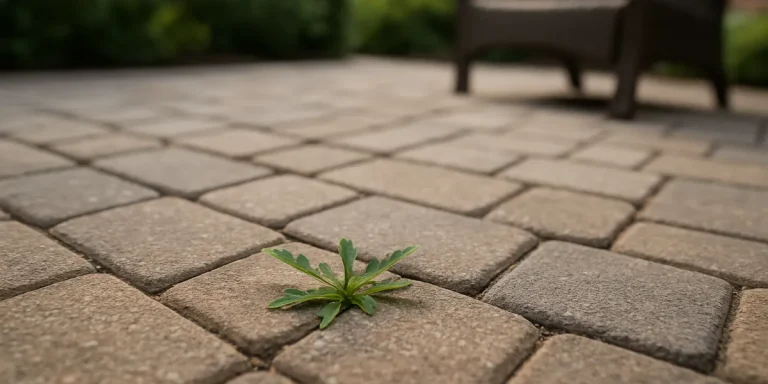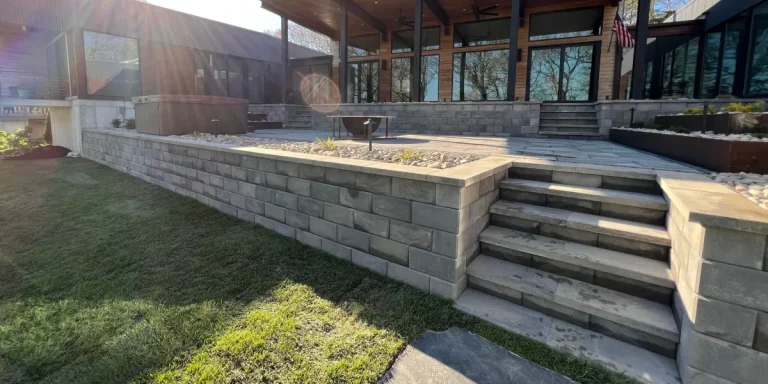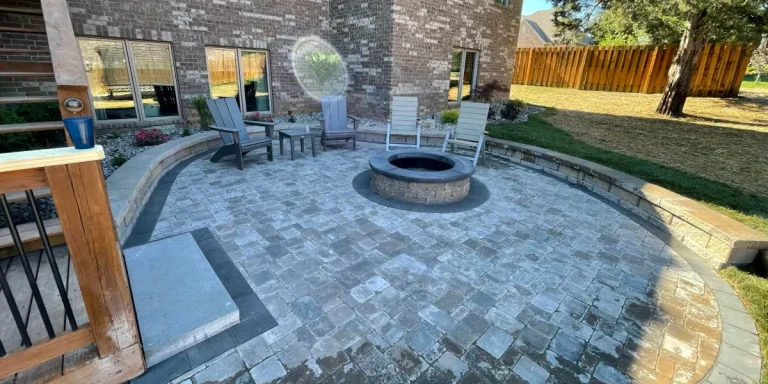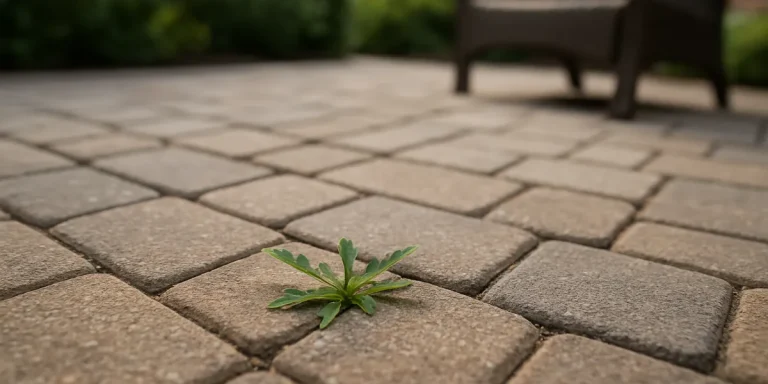How to Design a Paver Patio That Stays Cool in Summer
Summers in Ozark, Missouri can be hot—and if you’ve ever tried walking barefoot across a patio in July, you know just how quickly hardscaped surfaces can heat up. If you’re planning a new outdoor space, you may be wondering: How can I design a paver patio that stays comfortable even in the summer sun?
At Hunter Hardscapes & Outdoor, we help homeowners build beautiful outdoor living areas that are as functional as they are inviting. In this post, we’ll break down the best materials, design strategies, and installation practices for keeping your paver patio cool, even during peak summer heat.
Why paver patios get hot
If you've ever stepped onto a patio in the middle of a Missouri summer, you know how hot the surface can get. But not all patios absorb and retain heat in the same way. The temperature of a paver surface is influenced by a combination of environmental factors and material characteristics—some of which you can control through smart design.
Key factors that affect patio surface temperature:
-
- Color and finish of the material
Darker colors absorb more sunlight and heat, which raises the surface temperature significantly. Finishes also matter—smooth, sealed, or polished surfaces tend to retain more heat than textured or permeable ones. - Amount of direct sunlight
A patio that gets full exposure from mid-morning through late afternoon will naturally become hotter than one partially shaded by trees, nearby buildings, or shade structures. Even a small amount of dappled shade can make a noticeable difference in comfort. - Thermal mass and density of the paver
Materials like brick, natural stone, and poured concrete all have different levels of thermal mass—their ability to absorb and retain heat. Denser materials hold heat longer, meaning they stay hot well into the evening, especially after a long day of sun. - Airflow and surrounding features
Limited airflow and wind blockage can cause hot air to stagnate above your patio, creating an oven-like effect. Features like fencing, solid privacy walls, and tall plantings may unintentionally trap heat if not positioned with ventilation in mind.
- Color and finish of the material
Why this matters for patio design in Missouri
In hot, humid climates like Ozark and much of Southwest Missouri, a poorly designed patio can become uncomfortably hot—or even unusable—for several months each year. This impacts how often you can enjoy the space, especially during summer afternoons when you want to entertain, dine outdoors, or simply relax.
Without the right material choice, layout, and shade strategy, even the most beautifully designed patio may end up empty during the times you’d expect to use it most. That’s why we focus not just on appearance, but also on how the space will feel throughout the seasons.
By addressing these factors early in the design phase, we help homeowners avoid common pitfalls and create outdoor living spaces that stay cooler, more comfortable, and more functional year-round.
How to Choose Materials and Design a Cooler Patio
Designing a paver patio that stays cool in the summer starts with choosing the right materials—but it doesn’t stop there. How your patio is built, what surrounds it, and how much airflow and shade it receives all play a role in surface temperature and overall comfort.
At Hunter Hardscapes & Outdoor, we help homeowners across Ozark and Southwest Missouri build patios that not only look great, but feel great—even in the height of summer. Here’s how we do it:
Heat-resistant paver materials
Certain paving materials naturally perform better in sunny conditions. If your patio is in direct sun for most of the day, these materials can make a noticeable difference in how hot the surface feels underfoot.
Our top heat-friendly paver options include:
-
- Lighter-colored concrete pavers
Light shades like beige, buff, cream, or pale gray reflect more sunlight and absorb less heat. These colors stay significantly cooler than darker alternatives, making them ideal for full-sun patios. - Travertine pavers
This natural stone is one of the best options for staying cool—even when exposed to hours of sunlight. Travertine’s porous surface doesn’t hold heat like concrete or brick, making it a popular choice for patios, walkways, and especially pool decks. - Porcelain pavers
Porcelain offers a sleek, modern appearance with surprisingly good heat resistance. Because of their low density and surface reflectivity, porcelain pavers stay cooler than traditional concrete or natural stone. - Permeable pavers
These eco-friendly pavers are designed to allow air and water to pass through them, helping reduce surface heat buildup. They’re a great solution for driveways, walkways, and patios where stormwater management is also a concern.
- Lighter-colored concrete pavers
Choosing the right paver is about more than aesthetics—it’s about creating a surface you can actually enjoy during hot summer months. We'll help you select the right product based on your style, sun exposure, and overall project goals.
Smart design strategies to keep patios cooler
Even the most heat-resistant paver can get uncomfortable if the patio isn't designed with climate in mind. That’s why we combine material selection with smart design to create outdoor living spaces that stay cool, functional, and inviting.
Key design tactics we use to reduce patio heat:
-
- Use light tones throughout the space
In addition to light-colored pavers, we recommend coordinating your furniture, walls, and surrounding landscape with reflective, pale hues that help bounce heat away from the surface. - Add shade structures for relief
Features like pergolas, pavilions, sail shades, or even strategically planted trees can block direct sun and drop surface temperatures dramatically. These also make your patio usable at more times of day. - Encourage air flow
Designs that allow for cross breezes—such as open-sided structures or elevated platforms—help circulate hot air out of the space. This is especially helpful in backyards with limited wind movement. - Break up large hardscape surfaces
Integrating landscape beds, mulch borders, decorative gravel, or stepping stones can help dissipate heat and reduce the “heat island” effect that comes from expansive solid surfaces. - Opt for larger format pavers
Larger pavers with fewer joints absorb and retain less heat than smaller, joint-heavy layouts. They also cool down faster in the evening and can help reduce foot discomfort.
- Use light tones throughout the space
Tailored design for hot, sunny properties
For full-sun backyards or poolside patios—common in places like Nixa, Republic, and Ozark—we often recommend a combination of travertine pavers and a custom-built shade feature to deliver both cooling and style. These materials work well together and offer a timeless look while keeping the surface temperature significantly lower than traditional concrete.
Every yard is different, which is why our team tailors each patio design to the unique climate, layout, and usage goals of your outdoor space. Whether you’re entertaining, relaxing, or adding value to your home, we’ll help you make smart choices that perform well through every season.
Installation tips that make a difference
Even with the right materials and design choices, your patio’s long-term comfort and performance come down to how well it's installed. At Hunter Hardscapes & Outdoor, we don’t cut corners—our team follows proven installation techniques that help your patio stay cooler in the summer and last for decades with minimal maintenance.
A professional installation isn’t just about making it level and square—it’s about ensuring proper drainage, climate responsiveness, and resilience to the elements. Here’s how we do it:
Key installation practices that improve summer performance
-
- Use light-colored jointing sand
The material used to fill the gaps between pavers can impact surface temperature. We recommend and install light-colored polymeric or jointing sand to reduce heat retention in those seams. This small detail can make a big difference on hot days. - Build with a properly compacted base
Beneath every patio is a foundation of compacted base material—typically a mix of crushed stone or gravel. A well-built base supports good drainage, prevents settling, and helps regulate temperature by reducing trapped moisture and heat. We use layers of open-graded stone when appropriate for added airflow and permeability. - Plan paver orientation for sun exposure
During installation, we consider how the patio aligns with the sun throughout the day. In hot climates like Ozark’s, we may recommend aligning pavers and outdoor living zones to reduce peak sun exposure in the afternoon, particularly for seating areas. - Include softscape elements for natural cooling
Surrounding your patio with thoughtfully placed landscape beds, low shrubs, ornamental grasses, or water features adds more than visual appeal. These elements help cool the environment by reducing radiant heat and promoting evapotranspiration (the natural release of moisture from plants). - Integrate water management from the ground up
Missouri summers bring heat, but also the occasional heavy downpour. Proper grading, French drains, permeable paver options, and drainage channels are all essential to prevent pooling, protect your patio from erosion, and ensure your paver system lasts through every season.
- Use light-colored jointing sand
Why expert installation matters
Cutting corners on installation can result in more than cosmetic issues—it can lead to cracking, shifting, drainage problems, and heat retention that makes your patio uncomfortable to use. Our team brings the tools, training, and attention to detail needed to install patios that perform well under the pressures of both summer heat and Southwest Missouri’s seasonal swings.
We don’t just build patios—we engineer outdoor spaces to work with your climate, terrain, and lifestyle. Whether we’re installing a small backyard retreat or a large entertainment area with integrated hardscaping, you can count on us to get every detail right the first time.
Real project example: Nixa backyard with full sun exposure
A recent client in Nixa wanted a backyard patio for family gatherings—but the site received full sun all afternoon. We recommended light-toned concrete pavers combined with a custom-built pergola and border plantings to break up the hardscape and provide afternoon shade. The result is a stylish, comfortable outdoor space they now enjoy all summer long.
Additional services that enhance comfort
At Hunter Hardscapes & Outdoor, we provide a full range of services to help you get the most out of your outdoor space:
-
- Paver patio design and installation
- Shade structure construction (pergolas, pavilions, privacy walls)
- Landscape lighting to extend usability into the evening
- Drainage and grading to protect hardscapes from water and erosion
- Planting and softscape design to cool and soften your landscape
From initial design to final installation, we tailor each patio to fit your space, style, and comfort needs.
Proudly serving Southwest Missouri
We build paver patios and outdoor living spaces throughout:
-
- Ozark
- Springfield
- Nixa
- Republic
- Rogersville
- Branson
- Branson West
- Kimberling City
- Fair Grove
- Willard
Stay cool and comfortable all summer long
Let us design a patio that works with Missouri’s climate—not against it
If you're ready to create an outdoor space that stays cool, looks great, and lasts for years, reach out to Hunter Hardscapes & Outdoor. We'll help you choose the right materials and design features to make your patio a place you'll love to use—even in the heat of summer.
Serving Ozark and surrounding communities with expert hardscaping, landscape design, patio construction, and outdoor living solutions built to withstand Missouri’s seasons.

